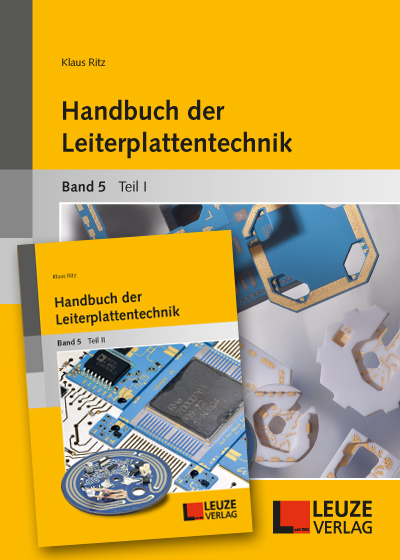

Handbuch der Leiterplattentechnik Band 5, Teil I + II
Standard delivery time: 2-4 working days
Shipping costs
- There are no shipping costs for all individual item purchases or downloads.
- Book shipments within Germany are charged by weight (plus VAT):
Weight in kg
Cost in EUR
up to 0.5 kg
2.50
up to 1 kg
3.50
up to 3 kg
5.50
up to 31 kg
6.90
Book shipments abroad are charged according to weight and priority (plus VAT):
Weight in kg | Economy costs in EUR | Priority cost in EUR |
up to 0.5 kg | 5.00 | 6.00 |
up to 1 kg | 7.50 | 9.00 |
up to 2 kg | 13.00 | 16.00 |
up to 3 kg | 20.00 | 24.00 |
up to 4 kg | 26.00 | 31.00 |
up to 5 kg | 32.00 | 38.00 |
up to 5.5 kg | 37.00 | 44.00 |
up to 6 kg | 39.50 | 47.00 |
up to 7 kg | 45.00 | 54.00 |
up to 8 kg | 52.00 | 62.00 |
up to 9 kg | 58.00 | 69.00 |
up to 10 kg | 64.00 | 76.00 |
etc... |
Information
Sixteen years lie between this fifth volume and the last handbook on printed circuit board technology, volume 4, which was published in 2003. It already described most of the technologies used today. However, much has developed in the meantime – significantly smaller structures and embedding in the printed circuit board design are examples of this. Chapters from volume 4 were therefore revised and, in some cases, significantly expanded for inclusion in this fifth volume. However, topics such as insulated metal substrates (IMS), printed electronics, base materials, mechanical processing and embedded components required additional chapters.
There are also 16 years of market developments between the current volume and its predecessor: trends continued, perspectives and strategies changed, and new opportunities and risks arose. Today, the German PCB industry has undergone radical downsizing and now consists of only about 30 companies. The PCB industry has experienced a similar fate at the European level: of the more than 550 producers at the beginning of the 2000s, only about 200 remain. In the last two years, these companies have experienced a welcome upswing: the temporary shortage of copper foil and laminates has led to bottlenecks in the Asian-dominated supply chain, prompting the European automotive industry to place more orders in Europe again. With investments in state-of-the-art production technologies and mergers and acquisitions, the PCB industry aims to make sustainable use of the opportunities offered by digitalisation, industrial automation, electromobility, autonomous driving and 5G. Whether a high-quality/premium concept remains viable in the face of increasing dependence on the leading Asian market remains a cause for concern.
The problem is that Europe is completely dependent on supplies from the USA and, increasingly, Asia for flexible materials. It is to be hoped that the European printed circuit board industry will continue to find ways to assert itself and remain successful through innovation and strategic decisions.
Information
Keywords:
No reviews yet. Be the first to review this product.




